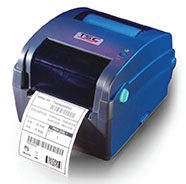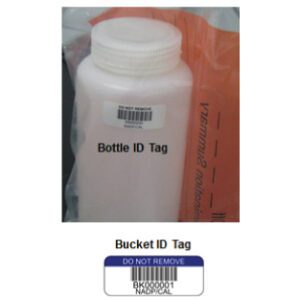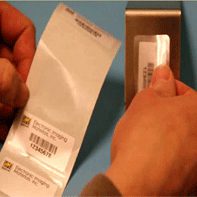Many people prefer to use heat-activated, ribbon-less labels, saving time and money with unnecessary printing supplies. If they are looking for higher print quality, more print durability, or a wider selection of media, they will use the thermal transfer setting. 
Should you by chance use both kinds of printing, you may have a variety of labels sitting around on the shelf. If you have a lot of people using the same printer and your labels are not carefully marked, it can be difficult to tell what they are and which printing method they require.
Here are a couple of quick ways to determine the differences:
1. Put a small drop of isopropyl alcohol (IPA) on the label material. If it immediately turns black, it is a direct thermal product. The alcohol has dissolved the special coating and color developer in the material.
2. If by chance you do not have IPA handy or have cotton swabs in your printhead cleaning kit, simply take your finger nail or the edge of a coin and try to scratch the material. If the scratch turns black, once again, this is direct thermal material.
If the material doesn’t change color, it is safe to say it is a thermal transfer label and you will need to use a printing ribbon.
To avoid having to go through all of this, we highly recommend that you identify each label material you use. Electronic Imaging puts a lot of code tags with a product description on the outside of all our label products. You could easily tape that to the core inside your roll of labels or back on the outside of the roll after you have done a printing job. If you print thermal transfer labels, it also wouldn’t hurt to add a note about what ribbon works best with each substrate. Still stumped? Give The Label Experts a call—we’re always happy to help!





